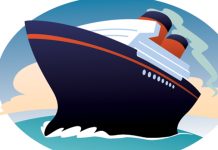This week marks the 50th anniversary of the first annual—and last annual—Catalina Channel Balloon Race.
The reasons why it was the “last annual” race will unfold before your eyes as you read this column. But it suffices to say that it was another in a long list of valiant—but ultimately vain—efforts to bring business and positive media coverage to Catalina during the slow winter months.
This week marks the 50th anniversary of the first annual—and last annual—Catalina Channel Balloon Race.
The reasons why it was the “last annual” race will unfold before your eyes as you read this column. But it suffices to say that it was another in a long list of valiant—but ultimately vain—efforts to bring business and positive media coverage to Catalina during the slow winter months.
Major Mott’s ‘Round the Island Motorboat Race in 1927, for example, was only held once because of weather that was so rough that most of the contestants had to be rescued. In fact, the winner of the race—a man named Leyland Jenkins—was the only contestant who even finished.
Ditto with the Wrigley Ocean Marathon held in January of 1927, a brutal race against the elements that saw, like Mott’s race, saw only one finisher.
But the Catalina Channel Balloon Race never got a second chance because of the fact that it turned deadly.
The race actually had a number of things going for it. First of all, being a balloon race no one had to actually get in the water (although many ultimately did, but not by design). The technology surrounding sports had improved vastly since the 1920s and the race actually featured some hefty celebrity action in the form of none other than actor Cliff Robertson riding in one of the balloons.
Robertson was one of Hollywood’s more popular leading men of the day, having just come off the heels of playing Lt. John F. Kennedy in the well-received “PT-109.”
For the Catalina event, Robertson was decked out in 1890s-style clothing, presumably to reflect the Victorian-era heyday of hot-air ballooning.
Sunday, January 18, 1964, was the fateful day and the idea was for a number of large hot air balloons to take off from the old Wrigley Field in Avalon Canyon and, utilizing the northwest winds, sail over the channel to whatever landing they could make on the mainland. Perhaps it was ominous that the race had been delayed for a week already because of high winds.
Sponsored by the California Balloon Club, the event featured an army of reporters and cameramen and, of course, lots and lots of locals who had turned out for the fun.
The entrants in the contest—the balloonists and their balloons—numbered eight in all and included well-known balloonists Don Piccard and Ed Yost as well as a lone woman entrant, Barbara Keith.
Each balloon was also to have its own chase boat on the salty brine far below to stay in communication with the balloon crews and to record distance and speed information.
The weather on this particular morning was troubling and the balloonists all gathered together at the ball field for a pow-wow on whether or not they really wanted to do this thing. It was a close call, they said, but they all agreed to give it a go, including Keith, who was heard to say firmly that she was going to take off whether the others did or not.
Trouble started early for our heroes when Piccard’s balloon went down on the East End before even getting out over the water.
A bit of overcast was forcing the balloons to keep a somewhat low altitude in order to maintain visual contact with their chase boats.
Robertson’s balloon, which he was sharing with a man named Frank Tallman, actually dipped into the sea at one point where the gondola actually capsized.
The pair managed to get the balloon airborne again, but the two men were doomed to spend the rest of the contest soaked and freezing in the chill January winds. By the end of the day, all of the other balloons had ditched in the ocean, save that of Ed Yost, who had intentionally landed his balloon in the surf at the mainland to avoid the large crowds gathered on the beach.
A banquet was held that night with all of the contestants in attendance—save one. As the evening wore on, the gathered race participants became more and more concerned that Barbara Keith was not present and no one seemed to know where she was or whether or not she had been accounted for.
The chase boat assigned to Keith’s balloon—the “Melody Joe” piloted by Jack Watts—had early on lost contact with the balloon through a combination of low cloud cover and choppy sea conditions that at one point forced Watts to return to Avalon Harbor.
By dusk, a report had come in of a balloon down in the sea with a smoke signal visible about 20 miles off San Onofre, but darkness was falling and at 7 p.m. the Coast Guard halted the search for the night and officially declared Keith’s balloon missing.
At daybreak the search began again and with the help of more reported sightings, the Coast Guard finally located the downed balloon. There, in the capsized gondola, they found the body of Keith who had died of hypothermia.
No attempt was made to hold the event the following year and the Catalina Channel Balloon Race faded into Island lore.
Jim Watson is the author of “Mysterious Island: Catalina,” available on Amazon, Kindle and in stores all over Avalon.










